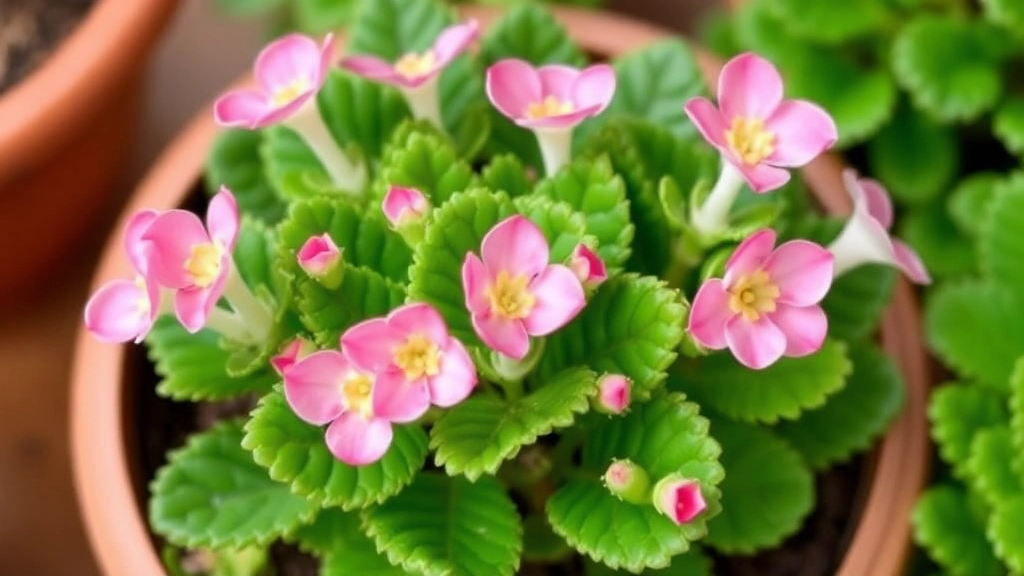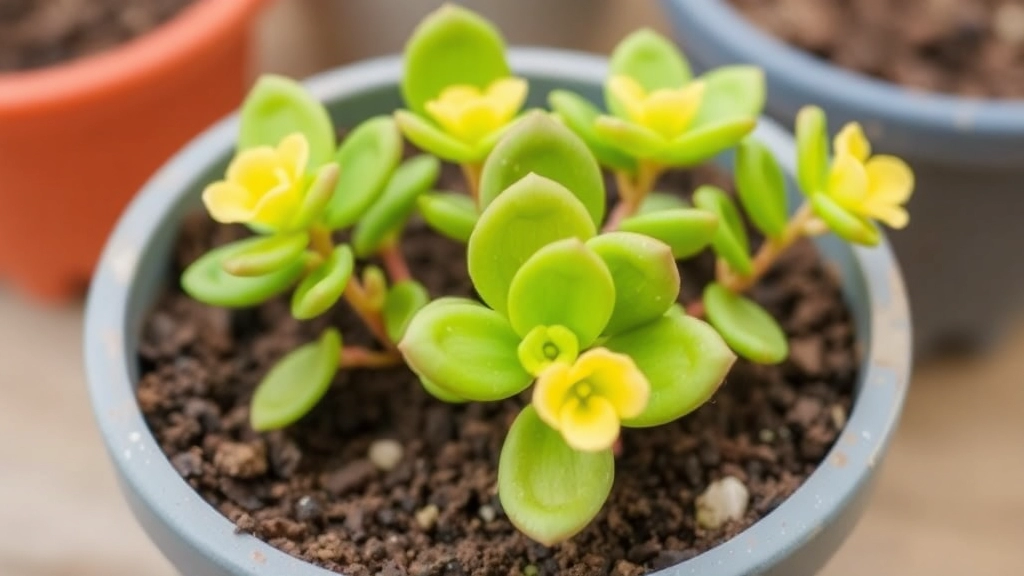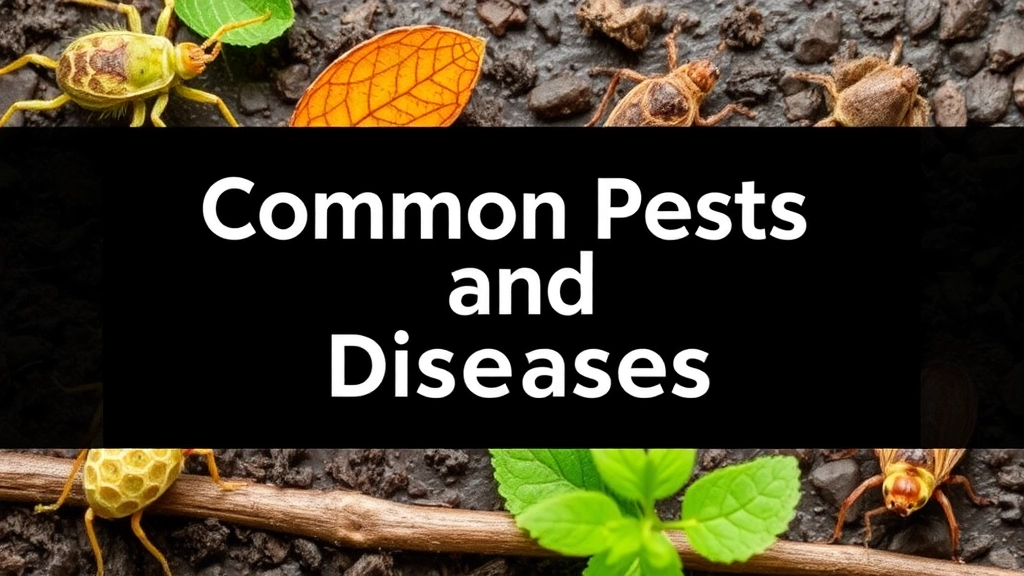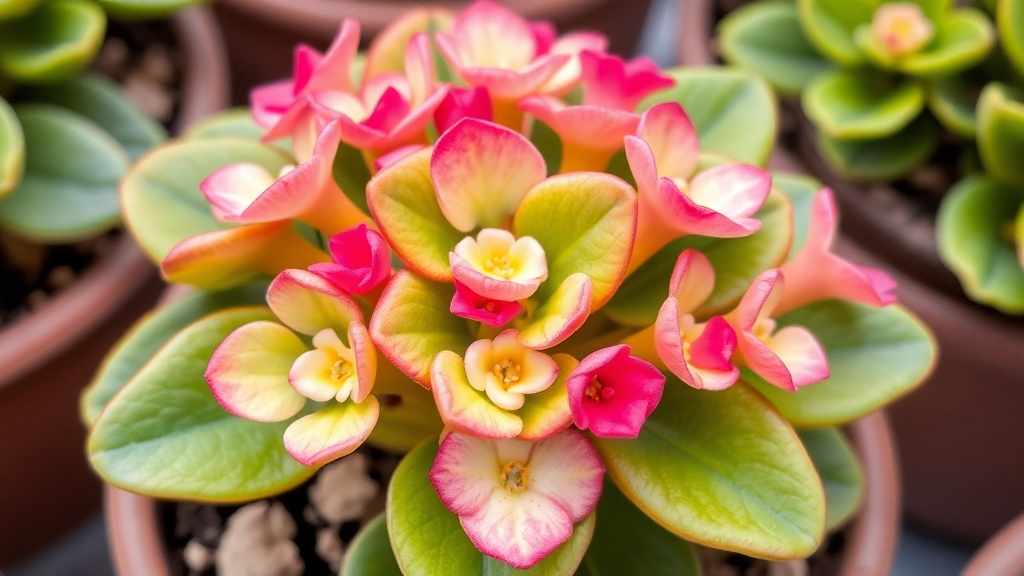Growing Kalanchoe Pumila Baker
When it comes to growing Kalanchoe Pumila Baker, also known as the Flower Dust Plant, there are a few essential things you need to know. This charming succulent is beloved for its silvery foliage and delicate pink flowers, making it a favourite among gardening enthusiasts. To ensure your Kalanchoe Pumila thrives, you’ll need to provide the right conditions, including proper light, watering, and soil.
Ideal Growing Conditions
Kalanchoe Pumila Baker loves bright, indirect sunlight and can tolerate some direct sun. It’s crucial to plant it in well-draining soil to avoid root rot, a common issue with succulents. When it comes to watering, less is more; allow the soil to dry out completely between waterings. With the right care, your Kalanchoe Pumila will flourish, adding a touch of beauty to your garden or indoor space.
Characteristics of Kalanchoe Pumila
Are you looking for a resilient houseplant that adds a touch of charm to your space?
Kalanchoe Pumila, often referred to as the “paddle plant” or “mother of thousands,” is a succulent that captivates with its unique features.
Key Features:
- Leaves: The leaves are thick, fleshy, and oval-shaped, resembling small paddles. Their silvery-green hue adds a refreshing touch to any collection.
- Growth Habit: This plant typically grows low to the ground, forming a dense mat that can reach about 30 cm in height.
- Flowers: In the right conditions, Kalanchoe Pumila produces small, tubular flowers that bloom in clusters. These flowers can be pink or yellow, bringing a pop of colour to your indoor garden.
- Hardiness: As a succulent, it is highly drought-tolerant, making it ideal for those who may forget to water occasionally.
- Versatility: Kalanchoe Pumila is perfect for pots, hanging baskets, or even as ground cover in warmer climates.
These characteristics make Kalanchoe Pumila a popular choice among both novice and experienced gardeners. For more detailed care instructions, check out our Kalanchoe Tomentosa care guide. Additionally, if you’re interested in exploring other varieties, don’t miss our comprehensive guide on types of Kalanchoe Tomentosa.
Ideal Growing Conditions for Kalanchoe Pumila

So, you’ve got your Kalanchoe Pumila, and you’re wondering where to put it, right?
Finding the perfect spot for your plant is key to keeping it healthy and thriving.
Light Requirements
Kalanchoe Pumila loves bright, indirect sunlight.
- Best Position: A south or west-facing window works wonders.
- Too Much Sun? If you notice leaf burn, it’s getting too much direct light.
Temperature Preferences
This plant enjoys a warm environment.
- Ideal Range: Between 18°C to 24°C (65°F to 75°F).
- Watch Out: Cold drafts or temperatures below 10°C (50°F) can stress it out.
Humidity Levels
Kalanchoe Pumila isn’t too fussy about humidity.
- Average is Best: It thrives in normal household humidity.
- Extra Moisture: If your home is super dry, a little humidity can help, but don’t overdo it.
Air Circulation
Good airflow is essential.
- Open Spaces: Keep it in a spot with decent air circulation to prevent mould and pests.
- Avoid Clutter: Don’t crowd it with other plants; give it some breathing room.
Watering and Moisture Needs
Understanding the watering and moisture needs of Kalanchoe Pumila is crucial for its health and growth. Many plant enthusiasts often wonder: How much water does my Kalanchoe really need? Is it possible to overwater it?
Kalanchoe Pumila, being a succulent, thrives on a watering routine that mimics its natural habitat. Here are some key points to consider:
- Watering Frequency:
- During the growing season (spring and summer), water when the top inch of soil feels dry.
- In the dormant months (autumn and winter), reduce watering to once every few weeks.
- Watering Technique:
- Water thoroughly until it drains from the bottom of the pot.
- Ensure that the plant does not sit in excess water, as this can lead to root rot.
- Humidity Levels:
- Kalanchoe Pumila prefers low humidity.
- Avoid placing it in overly humid environments, as this can cause fungal issues.
- Signs of Underwatering or Overwatering:
- Yellowing leaves can indicate overwatering.
- Wrinkled leaves signal that the plant is thirsty.
By following these guidelines, you can maintain the right moisture balance for your Kalanchoe Pumila. For more detailed care tips, check out our Kalanchoe Pumila care guide and learn about the ultimate guide to growing and caring for Kalanchoe.
Soil and Potting Requirements for Kalanchoe Pumila

When it comes to ensuring your Kalanchoe Pumila thrives, understanding its soil and potting requirements is essential. Many plant enthusiasts often wonder, “What type of soil is best for my Kalanchoe?” or “How do I choose the right pot?”
Soil Type
Kalanchoe Pumila prefers well-draining soil. Here’s what to look for:
- Cactus or Succulent Mix: These mixes are specifically designed to provide excellent drainage.
- Additives: You can enhance drainage by mixing in perlite or coarse sand. This helps prevent root rot, which is a common issue.
Pot Selection
Choosing the right pot is equally important. Consider the following:
- Drainage Holes: Always opt for pots with drainage holes. This allows excess water to escape, preventing soggy soil.
- Size: Select a pot that is slightly larger than the root ball of your plant. This gives it room to grow without overwhelming it.
Repotting Considerations
As your Kalanchoe grows, it may need repotting. Here’s when and how to do it:
- Timing: The best time to repot is during the spring. This aligns with the plant’s growing season.
- Signs: If you notice roots growing out of the drainage holes or stunted growth, it’s time to repot.
- Technique: Gently remove the plant from its current pot, shake off excess soil, and place it in a new pot with fresh soil.
Propagation Techniques
Are you eager to expand your Kalanchoe Pumila collection but unsure how to get started?
Propagation is a rewarding process that allows you to create new plants from existing ones. Here’s how you can do it effectively:
Leaf Cuttings
- Select Healthy Leaves: Choose plump, healthy leaves from the parent plant.
- Cut the Leaves: Using a clean, sharp knife or scissors, cut the leaves at the base.
- Drying: Allow the cuttings to dry for a few days to form a callus. This helps prevent rot.
- Planting: Place the dried cuttings in well-draining soil, burying them slightly.
- Watering: Lightly mist the soil to keep it moist but not soggy.
Offsets
Kalanchoe Pumila often produces offsets, or small plantlets, at its base.
- Identify Offsets: Look for small plants growing around the base of the main plant.
- Remove Offsets: Gently twist or cut the offsets away from the parent plant.
- Replanting: Plant them in their own pots with suitable soil.
- Care: Water lightly until they establish roots.
Seed Propagation
While less common, propagating from seeds is also an option.
Common Pests and Diseases

So, you’ve got your Kalanchoe Pumila thriving, but what happens when those pesky pests or diseases come knocking?
Let’s dive into the common culprits that might ruin your plant’s vibe.
Pests to Watch Out For
- Aphids
Tiny and usually green, these little guys suck the sap from your plant.
Signs: Curling leaves and sticky residue.
Solution: A gentle spray of water or insecticidal soap can do the trick. - Mealybugs
These white, cottony blobs love to hide in leaf joints.
Signs: Sticky leaves and a waxy coating.
Solution: Dab them with a cotton swab soaked in alcohol. - Spider Mites
If you notice tiny webs, it might be these critters.
Signs: Yellowing leaves and fine webbing.
Solution: Increase humidity and spray with water. - Scale Insects
Look for small, brown bumps on stems and leaves.
Signs: Wilting and yellowing leaves.
Solution: Remove them manually or use insecticidal soap.
Diseases to Keep an Eye On
- Root Rot
Overwatering is the main culprit here.
Signs: Wilting and mushy roots.
Solution: Ensure proper drainage and let the soil dry out. - Powdery Mildew
A white, powdery substance on leaves can indicate this fungal issue.
Signs: Distorted leaves and stunted growth.
Solution: Improve air circulation and avoid overhead watering. - Leaf Spot
Brown or black spots on leaves can be a sign of fungal infection.
Signs: Discolouration and leaf drop.
Solution: Remove affected leaves and avoid wetting the foliage.
### VII. Seasonal Care Tips for Kalanchoe Pumila
As we delve into seasonal care tips for Kalanchoe Pumila, it’s essential to understand how this unique plant responds to changes throughout the year.
#### Spring Care
Repotting and Maintenance
So, you’re wondering when and how to repot your Kalanchoe Pumila? Trust me, it’s a common concern for many plant lovers.
FAQs about Kalanchoe Pumila Baker
What are the ideal light conditions for Kalanchoe Pumila?
Kalanchoe Pumila thrives in bright, indirect sunlight. A south or west-facing window is ideal. However, if you notice leaf burn, it may be receiving too much direct light.
What temperature range is best for Kalanchoe Pumila?
This plant prefers a warm environment with temperatures between 18°C to 24°C (65°F to 75°F). Be cautious of cold drafts or temperatures below 10°C (50°F), as these can stress the plant.
How much humidity does Kalanchoe Pumila need?
Kalanchoe Pumila is not fussy about humidity and does well in average household humidity. If your home is particularly dry, a little extra humidity can help, but avoid overdoing it.
What type of soil is best for Kalanchoe Pumila?
Kalanchoe Pumila prefers well-draining soil. A cactus or succulent mix is ideal, and you can improve drainage by adding perlite or coarse sand to the soil.
What kind of pot should I use for Kalanchoe Pumila?
Choose a pot with drainage holes to allow excess water to escape, preventing soggy soil. Opt for a pot that is slightly larger than the root ball to give the plant room to grow.
When and how should I repot my Kalanchoe Pumila?
The best time to repot Kalanchoe Pumila is during the spring, aligning with its growing season. If you notice roots growing out of the drainage holes or stunted growth, it’s time to repot. Gently remove the plant from its current pot, shake off excess soil, and place it in a new pot with fresh soil.
What are common pests that affect Kalanchoe Pumila?
Common pests include aphids, mealybugs, spider mites, and scale insects. Aphids cause curling leaves and sticky residue, while mealybugs leave a waxy coating. Spider mites create tiny webs, and scale insects appear as small, brown bumps on stems and leaves.
How can I treat pest infestations on my Kalanchoe Pumila?
For aphids, a gentle spray of water or insecticidal soap can help. Mealybugs can be dabbed with a cotton swab soaked in alcohol. Increasing humidity and spraying with water can deter spider mites. Scale insects can be removed manually or treated with insecticidal soap.
What are common diseases that affect Kalanchoe Pumila?
Common diseases include root rot, powdery mildew, and leaf spot. Root rot is often caused by overwatering, while powdery mildew appears as a white, powdery substance on leaves. Leaf spot manifests as brown or black spots on leaves.
How can I prevent and treat diseases in Kalanchoe Pumila?
To prevent root rot, ensure proper drainage and let the soil dry out between waterings. Improve air circulation and avoid overhead watering to prevent powdery mildew. Remove affected leaves and avoid wetting the foliage to manage leaf spot.
References
-
Growing Guide for Kalanchoe Pumila – The Spruce
-
Kalanchoe Pumila Care – Gardening Know How
-
Kalanchoe Pumila – House Plants Expert
